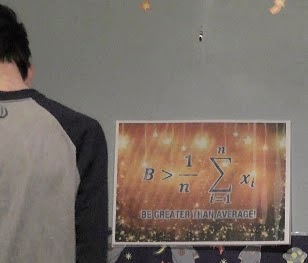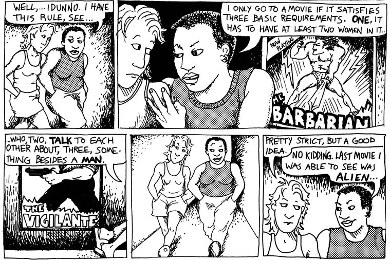 |
| Main Character from PiP. |
 |
| Lauren in her costume |
 |
| The NASA T-Shirt |
 |
| The Poster |
Our third main character was popular and somewhat bullied our main character. By introducing her with the shock of the main character slamming into the lockers, we made it clear that she was a bully. We made sure to tell the actress to continue walking, without looking back, to help anchor how she was a bully. We wanted this character to wear clothes that somewhat contrasted with out main character, so we had her wear a skirt along with leggings, to contrast with the trousers worn by the main character. We also had her wear a jacket/cardigan. The jacket doesn't quite contrast with the main character, as it could be seen as a cardigan. This is because we wanted to signify that there was some similarities between the two. She was also blonde, which helped to signify that she was popular, something that would obviously be anchored at a point later in the movie, and more socially accepted than her ginger counterpart.
Comparing the two character's (the main character and the love interest's girlfriend) outfits, you can see that the main character is wearing bright, colourful clothes, whereas the 'bully' is wearing dark clothes. We used the colourfulness of each of the characters clothes to help signify that they were enemies. With the colourful clothes showing the main character's goodness, and the dark showing the badness.
As well as countertypes and stereotypes of gender, hair colour and social class, points that can be drawn from our movie opening is the lack of ethnic minorities, with our cast being 100% caucasian some critics may see it as subtle racism, like they did with Richard Curtis' Rom-Coms. The choice for an entirely caucasian cast was one we were stuck with, as a result of the area in which we live having so few non-caucasians, we had to mostly cast caucasian people.
Another point is that all our characters in the opening are heterosexual. We made this choice as a reflection of normative representation. Because, but increeasingly less so in our modern day society, the very large majority of people are heterosexual people and in our consuming of media texts we see mostly heterosexual people, it made sense to make it a heterosexual couple, this would make the situations in the film far more relatable to the major target audience, heterosexual teen/young adult girls.
 |
| The comic that started the bechdel test |
As my group was mixed gender, we were very consious about conforming to what is called the 'patriarchal' viewpoint, that is to say, we were careful to avoid the inclusion of objectifying women, just having them there for their looks and general exploiting of them for commercial gain. However, with us all being fortunate enough to have not encountered much extreme sexism, it was hard for us to consider what might upset people who may have been victims to such sexism, which is why we played it safe and only included a minimal amount of shots where we could be seen as objectifying the women in our film opening.
No comments:
Post a Comment